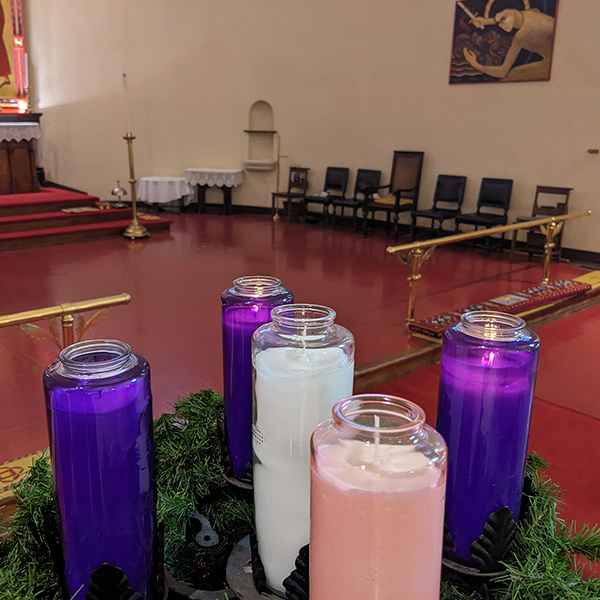By Rev. Canon Stewart Murray
The cycle of the Church year, which shapes and guides us in our walk with Christ, begins anew each Advent season. The church year follows the revelation of Jesus Christ from the prophecies of his coming to his resurrection and ascension and looks towards his coming again in glory. Interspersed in the year are days that invite us to reflect on the life of the blessed Virgin Mary, and the saints and martyrs who have followed Christ from the time of the apostles down to our time. The calling to remembrance of these men and women is intended to strengthen and inspire us in our day as we seek to be faithful disciples of Jesus. One of the recent additions to the traditional list of saints’ and martyrs’ celebrations are the memorials of Canadian Anglican “worthies”, not saints in the traditional sense, but people who by their faith in Christ enabled the Church to meet the challenges it faced. Some examples include people from our own Diocese, such as Roberta Tilton, founder of the Women’s Auxiliary (the predecessor to the ACW), and Archbishop John Roper, whose leadership was honoured by Anglicans in Canada and around the world. An example beyond our Diocese is John West, who in 1845 was a missionary to the Red River settlements and whose honouring is a reminder of how the Church was an important partner in the development of Canada. The Church’s memorials of such worthies highlights the many people who helped shape the Anglican witness around the world and in Canada.
The cycle of the Church year, with the inclusion of both times of joy – such as the celebrations of Christmas and Easter – and times of disappointment and loneliness, such as Lent and Holy Week – resonates with our own lives. The reliving through Word and liturgy of the great events of Christmas and Easter are to help “until all of us come to the unity of the faith and of the knowledge of the Son of God, to maturity, to the measure of the full stature of Christ” (Eph 4: 13). We can also see ourselves, especially our struggles to be faithful, and our questions and doubts, reflected in the lives of the saints.
The two major cycles in the Church year are Advent to Epiphany and then Ash Wednesday to Pentecost. The time between the end of the Advent-to-Epiphany cycle and the start of the next is called Sundays after Epiphany; it lasts until the beginning of Lent. The time between Pentecost and Advent is known as Sundays after Pentecost, or, in the BCP, Sundays after Trinity. To help mark the different periods in the year, the Church over the centuries has developed, especially in the West, a colour scheme to be a visible guide to the year: purple, the colour of penitenance and renewal, for Advent, Lent, and days of solemn prayer; white/gold, the colour of joy and purity for Christmas, Easter, weddings and certain Saints’ days; red, the colour of blood and fire, for feast days of martyrs and the fire of Pentecost; black to mark the sorrow of death; green, the colour used for so much of the year, is perhaps one of the most important, for it is a reminder of our desire to grow in Christ.
The rhythm and structure of the Church year provide a framework for our own spiritual growth and remove worship from the domain of personal whims to the discipline of the wider community. One of the strengths of the Anglican tradition has been the various prayer books, whether the Book of Common Prayer of 1962 or the Book of Alternative Services (1985), that have shaped the common worship life of the Church. The formality of the Church year and of set forms of worship give us a common language and understanding of living the Gospel that enables us to worship together and to share our distinct tradition with the wider community.


